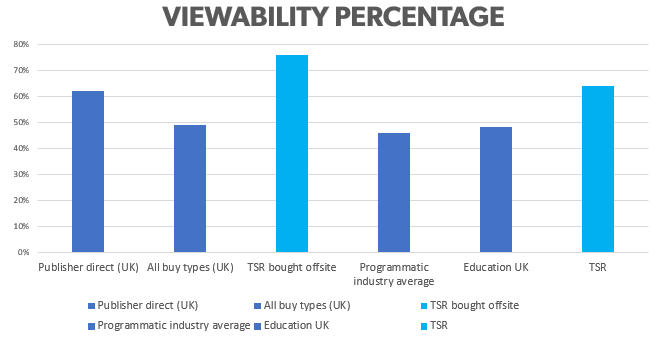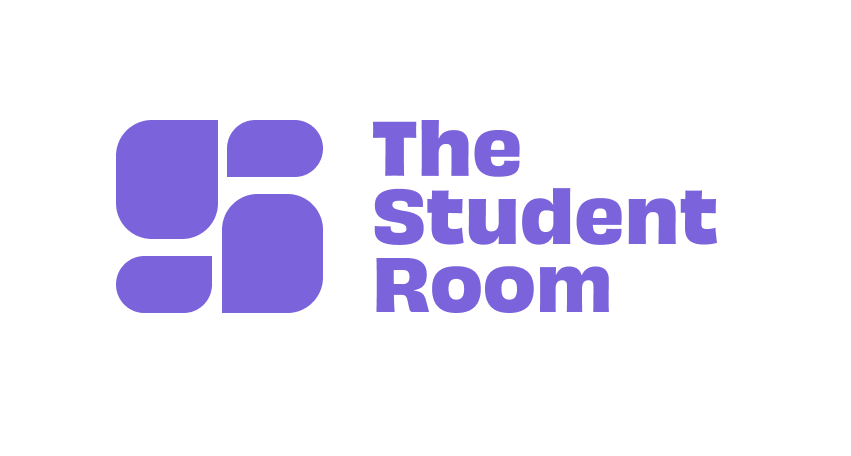Viewability is the online advertising metric tracking the impressions seen by users. As technology evolves, more marketers are valuing viewable ads rather than served impressions, making viewability a hot topic in sector. To help you get the most out of your campaign, we’re sharing how viewability impacts you, helpful ways to avoid wasted budget and how we’ve maximised viewability at The Student Room.
The IAB (Internet Advertising Bureau) defines a viewable impression as an ad that’s at least 50% visible in an area of a webpage for at least one second. According to a report by meetrics*, the UK average viewability is 49%, which means more than half of the ads served online in the UK are not being seen by users.
WHAT THIS MEANS TO YOU…
With viewability becoming increasingly relevant, marketers are questioning the accountability of their ads and the possibility they are paying for impressions that aren’t being viewed. This affects conversions too; can you be sure the user who converted did it because they saw your ad?
A “stolen conversion” occurs when an ad is served but not seen, and the user goes on to complete the action anyway – with the campaign getting credited with a conversion it didn’t generate or prompt.
The stolen conversion trap is a dangerous place. It can feel like you’re in a great situation; with high conversions, low CPAs and cheap media. However low viewability not only means stolen conversions and unfairly attributed credit, it can also muddy the waters in terms of your strategic decision making.
This is vital to understand in the programmatic space because when users convert, programmatic technology will value that persona, activity, or media and work harder to serve your ads to similar individuals at a higher bid price. However, if that user didn’t engage with your brands messaging in the first place, not only have you paid your supplier for a conversion that would have happened anyway. But the targeting is impacted for the rest of your campaign leaving you paying more and chasing users that may not be relevant or interested in this specific campaign.
It’s also easy to get distracted by a low CPM and think you’re getting away with a bargain. However, the fact that more than half of the ads served online in the UK are not viewable to users should give us pause for thought. Programmatic has a core performance value and a halo effect of non-converting ads driving brand, consideration of viewable CPM should probably be higher in our minds when it comes to brand value.
WHAT TO DO ABOUT IT?
Be mindful of viewability. This important metric can give you valuable insights to inform where your ads are most effective, which ads encourage the most engagement and ensure your spend is working harder for you.
Try talking to your media partner too, see what they have to offer and ask for their viewability standards. A trustworthy vendor will be transparent and give you the advice needed when it comes to reporting data measurement, meeting your expectations and getting the most out of your programmatic campaign.
IMPROVING VEIWABILITY
Passionate about providing ROI to our clients, we’ve worked hard to gain a site wide viewability of 68%*, which is significantly higher than the industry average of 46%.

To achieve this, we’ve unleashed our inner geek; making improvements to ad clutter and delivering a smooth user experience, introducing lazy loading, making site adjustments etc. For example, ensuring spotlights only load when they come into view has helped double viewability for spotlights from 45% to 82%. If you’d like to know more get in touch, our ad tech boffins (Paul and Pete in particular) love talking viewability.
Interested to find out more? See how our clients are leveraging TSR data to deliver a successful programmatic campaign.
*Metrics.com
*TSR ad viewability 01/05/2017, from IAS

